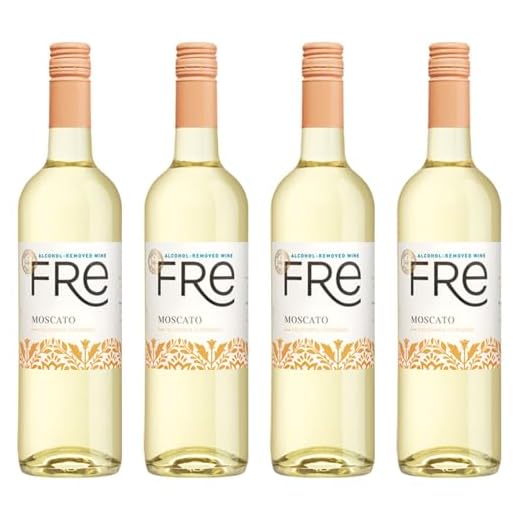



When it comes to selecting a glass, opt for the darker variety if you’re seeking a fuller body and richer flavors, often associated with notes of dark fruits and spices. This choice tends to pair well with heartier dishes, enhancing the overall dining experience.
If your palate leans towards crisp and refreshing sensations, the lighter option offers vibrant acidity and fruit-forward profiles, making it ideal for seafood and lighter fare. This variety often contains fewer tannins, resulting in a smoother finish that many enjoy.
Consider the health aspects as well; the darker variant generally contains higher levels of antioxidants, which may provide certain health benefits. However, the lighter selection often boasts lower calories and can be a more refreshing choice for warm weather or casual gatherings.
Ultimately, the decision should reflect your personal taste preferences and the food pairings you plan to enjoy. Experimenting with both types can lead to delightful discoveries and a deeper appreciation for the nuances each brings to the table.
Choosing Between Two Types of Grapes
Opt for the darker variety if heart health is a priority. Studies indicate that it contains higher levels of resveratrol, linked to improved cardiovascular function. This compound may help lower blood pressure and enhance circulation.
Conversely, the lighter option tends to have fewer calories and lower sugar content, making it a suitable choice for those mindful of their caloric intake. It’s often more refreshing, especially in warmer climates, and pairs well with lighter dishes, enhancing the overall dining experience.
When considering antioxidants, both types have their merits. The darker option generally boasts a higher concentration of antioxidants due to the fermentation process involving grape skins. However, the lighter variant can still offer beneficial compounds, and is often enjoyed by those who prefer a crisper taste.
In terms of sulfites, the lighter choice may contain more, which could be a factor for those sensitive to these compounds. On the other hand, the darker variant typically has a more pronounced tannic structure, which can contribute to a more robust flavor profile.
Ultimately, the decision hinges on personal preferences, health considerations, and the occasion. Experiment with both types to discover which aligns with your palate and lifestyle. Pairing them thoughtfully with various dishes can elevate your culinary enjoyment and enhance the overall experience.
Nutritional Differences Between Red and White Wine
Red varieties typically contain higher levels of antioxidants, specifically resveratrol, which is linked to heart health benefits. On the other hand, lighter options often have a lower calorie count, making them a preferable choice for those monitoring caloric intake. Here’s a breakdown of the nutritional content:
| Component | Red Varieties (per 5 oz) | White Varieties (per 5 oz) |
|---|---|---|
| Calories | 125 | 120 |
| Carbohydrates (g) | 4 | 3.5 |
| Sugar (g) | 0.9 | 1.4 |
| Alcohol by Volume (ABV) | 13-15% | 11-13% |
| Antioxidants | Higher levels (e.g., resveratrol) | Lower levels |
For individuals interested in the health aspects, selecting darker options may provide additional benefits due to higher antioxidant levels. Conversely, if calorie control is a priority, opting for lighter selections could be more advantageous. Understanding these differences can help tailor your choices to align with personal health goals.
Health Benefits of Red Wine
Consuming moderate amounts of this dark beverage can provide specific health advantages. Studies indicate that it may enhance cardiovascular health by improving cholesterol levels and reducing blood pressure.
Key Components
- Resveratrol: A powerful antioxidant found in grape skins, known for its potential to protect blood vessels and lower inflammation.
- Polyphenols: These compounds contribute to heart health and may aid in preventing certain chronic diseases.
- Flavonoids: These antioxidants help combat oxidative stress, which can reduce the risk of heart disease.
Recommended Intake
For optimal health benefits, a daily consumption of one to two glasses is suggested. This amount can help to achieve a balance between enjoying the flavors and gaining health perks without excess.
Pairing this beverage with meals can enhance digestion and provide a more enjoyable dining experience. The combination of food and drink can amplify the health benefits while making meals more satisfying.
Always consult with a healthcare professional to determine the best approach for individual health needs and conditions. Moderation is essential for maximizing the positive effects while minimizing risks.
Health Benefits of White Wine
In moderation, a glass of pale beverage can offer notable advantages for health. It contains antioxidants such as flavonoids and phenolic compounds that contribute to heart health by improving circulation and reducing cholesterol levels.
Research suggests that moderate consumption may lower the risk of certain diseases, including type 2 diabetes and some types of cancer. The polyphenols present in this drink can help combat oxidative stress and inflammation, promoting overall wellness.
A study indicated that those who consume it regularly may experience better lung function and a decreased risk of respiratory issues. Additionally, it has been associated with improved cognitive function, potentially reducing the risk of neurodegenerative diseases.
Furthermore, the low calorie count makes it a favorable choice for those watching their weight. This beverage often contains fewer calories compared to its darker counterpart, allowing for enjoyment without excessive caloric intake.
Lastly, the refreshing nature enhances the overall dining experience, making meals more enjoyable, which can lead to improved mental well-being. The social aspect of sharing a glass with friends or family also contributes positively to emotional health.
Impact on Heart Health: Red vs. White
Opting for a glass of crimson or pale varietal can influence cardiovascular wellness significantly. Studies indicate that the presence of polyphenols, particularly resveratrol, is more pronounced in darker types, contributing to improved heart function and circulation. These compounds are known to reduce LDL cholesterol and enhance endothelial function, which is essential for maintaining healthy blood vessels.
On the other hand, lighter options also provide certain advantages. They contain flavonoids that can support heart health by improving blood flow and lowering blood pressure. While the protective effects may not be as potent as those found in darker selections, they still contribute positively to overall heart function.
In moderate consumption, both types can offer protective benefits. However, if the goal is to maximize heart health, focusing on darker selections may yield greater results. It’s important to balance enjoyment with moderation to reap the benefits without the risks associated with excessive alcohol intake.
For those seeking additional ways to support heart health, consider integrating a well-rounded diet rich in fruits, vegetables, and whole grains. Pairing these with a refreshing glass of your choice can enhance the dining experience while promoting well-being. And if you’re tackling kitchen chores, don’t forget to grab the best scrubber for washing dishes to keep your space tidy as you savor your drink.
Wine Pairing: Choosing Based on Dish
For a seafood platter, a crisp Sauvignon Blanc enhances the freshness of the catch, while a buttery Chardonnay complements richer dishes like lobster or crab. When serving grilled meats, opt for a bold Cabernet Sauvignon, which matches the intensity of flavors, or a spicy Syrah that can elevate a smoky barbecue experience.
Pasta with tomato sauce pairs beautifully with a medium-bodied Merlot, as its softness balances the acidity of the tomatoes. On the other hand, a Pinot Grigio works well with lighter pasta dishes, providing a refreshing contrast.
Cheese and Charcuterie
Soft cheeses like Brie and Camembert are best accompanied by a fruity Riesling, which cuts through the creaminess. For aged cheeses, consider a robust Malbec that can handle the strong flavors. Charcuterie boards are versatile; a sparkling wine or a dry Rosé complements a variety of cured meats and cheeses.
Desserts and Sweets
With chocolate desserts, a rich Port or a full-bodied Zinfandel enhances the decadent flavors. For fruit-based desserts, a sweet Moscato or a late-harvest Sauvignon Blanc brings out the natural sweetness and acidity, creating a delightful balance.
Understanding these pairings allows for a more enjoyable dining experience, enhancing both the flavors of the dish and the characteristics of the selected beverage.
Alcohol Content and Its Effects
The alcohol concentration in various types of fermented beverages plays a significant role in the overall experience and health implications. Typically, the content ranges from 8% to 15% by volume, with fortified varieties exceeding this range. Understanding how these levels affect health and enjoyment is essential.
A higher alcohol percentage can lead to quicker intoxication, making moderation crucial to prevent adverse effects such as impaired judgment and increased risk of accidents. For those who prefer a lighter option, beverages with lower alcohol content may provide a more manageable experience while still allowing for enjoyment.
Caloric Impact
In terms of caloric intake, beverages with elevated alcohol levels tend to contain more calories. This is primarily due to the residual sugars present. If caloric management is a goal, selecting lower alcohol options can assist in maintaining a balanced diet without sacrificing enjoyment.
Individual Tolerance
Individual tolerance varies greatly. Some may find that a drink with a higher alcohol content affects them more significantly than others. It’s prudent to be mindful of personal limits and adjust consumption accordingly. Learning to appreciate flavors rather than solely focusing on alcohol strength can enhance the overall tasting experience.










